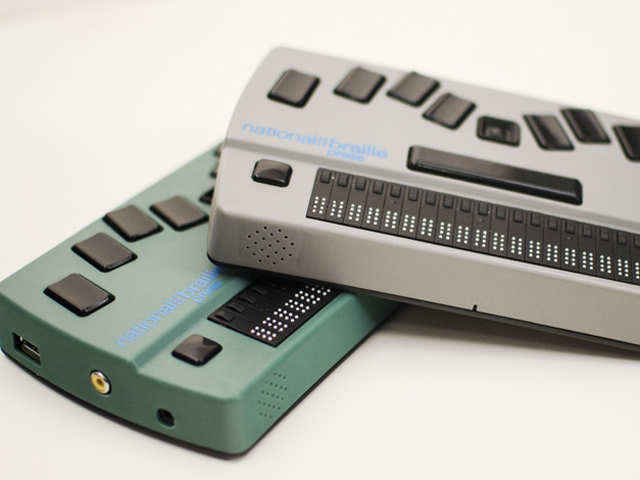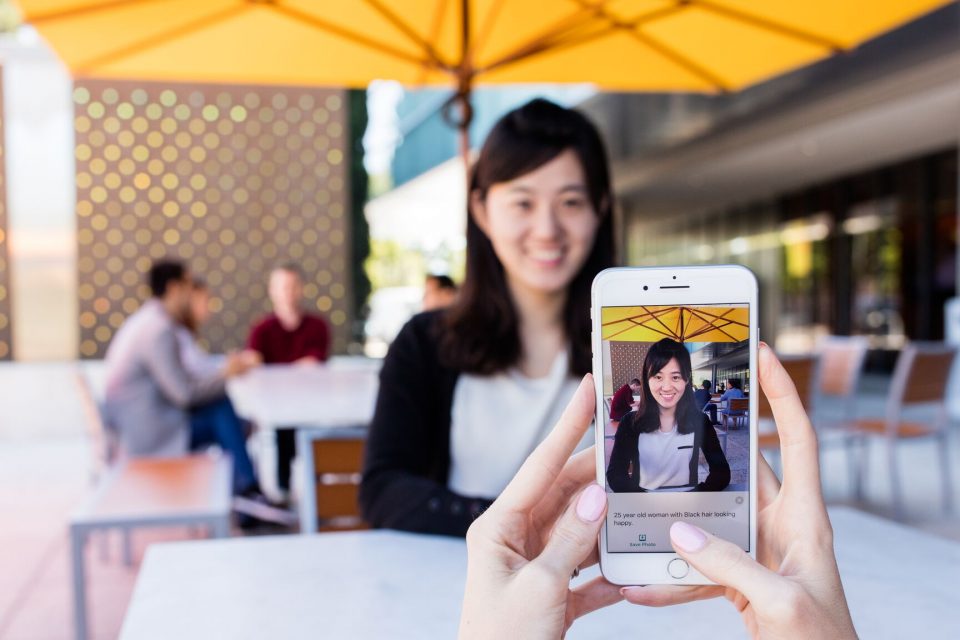Wearable Technology for Low Vision: Making Daily Life Easier
Wiki Article
An Overview to Life-altering Assistive Innovation for the Blind and Aesthetically Damaged
The innovation of assistive technology has ushered in a transformative period for people who are blind or aesthetically damaged, offering devices that improve autonomy and enhance day-to-day experiences. Advancements such as wise navigation gadgets and AI-driven applications are redefining just how individuals communicate with their environments, while obtainable analysis solutions and wise home innovations promise to more boost the top quality of life.Smart Navigation Equipment
Smart navigating tools are changing the means individuals who are aesthetically damaged or blind connect with their setting. These sophisticated innovations, which incorporate GPS, audio comments, and haptic signals, supply users with important info regarding their surroundings, improving their independence and movement.
One prominent instance is using wise walking canes outfitted with sensing units that identify challenges and provide real-time responses via vibrations or audio cues. These tools enable individuals to browse complicated settings, such as active streets or crowded public rooms, with enhanced self-confidence. Furthermore, wearable tools, such as wise glasses, are being established to aid in acknowledging faces, reviewing message, and identifying objects, additionally enhancing the individual's spatial understanding.
Furthermore, clever navigating tools are increasingly incorporating man-made knowledge to assess data and adjust to users' preferences. This tailored technique not just boosts navigating efficiency yet also promotes a sense of empowerment among customers. As technology remains to advance, the potential for clever navigation tools to produce an extra obtainable and inclusive world for people who are aesthetically damaged or blind remains promising, inevitably reshaping their day-to-day experiences and communications.
Ingenious Mobile Applications
Mobile applications are becoming effective tools for helping individuals who are blind or visually impaired, offering a series of capabilities that improve daily living. These apps harness progressed modern technology to promote everyday jobs, boost availability, and promote independence.One classification of ingenious mobile apps focuses on aesthetic recognition. Applications like Be My Eyes link customers with sighted volunteers using video phone calls, making it possible for real-time assistance for jobs such as reading labels or navigating unfamiliar settings. Applications like Seeing AI make use of artificial knowledge to describe surroundings, checked out message, and determine things, giving customers with critical details at their fingertips.
An additional considerable area is navigating and alignment. Applications such as Aira and Close-by Explorer offer audio guidance, helping users browse metropolitan spaces effortlessly. They provide customized help, permitting a more confident expedition of the setting.
Moreover, wellness and health apps accommodate details needs, such as medication administration and physical fitness monitoring. These applications aim to cultivate a holistic method to wellness, making sure that customers can preserve their health separately.
Wearable Assistive Devices
Wearable assistive tools stand for a significant innovation in modern technology made to sustain people who are blind or visually impaired. These gadgets improve movement and freedom by providing real-time responses regarding the surrounding atmosphere. Amongst the most noteworthy wearable technologies are smart glasses furnished with video cameras and sensing units, which can determine challenges and relay critical info with sound cues.
One more cutting-edge alternative includes wrist-worn devices that utilize ultrasonic waves to spot challenges and give navigational assistance. These gadgets often include personalized setups, permitting customers to customize the signals to their weblink details requirements.
The combination of synthetic intelligence in wearable assistive technology is likewise noteworthy, as it constantly enhances the accuracy and responsiveness of these tools. On the whole, wearable assistive tools are changing the lives of the aesthetically impaired and blind, cultivating higher autonomy and improving quality of life through ingenious services.
Obtainable Reading Solutions
Obtainable reading options play an essential duty in allowing people who are aesthetically damaged or blind to involve with text throughout various formats. These solutions encompass a series of technologies and tools made to improve reading experiences, from traditional print products to digital web content.One noticeable option is Optical Personality Acknowledgment (OPTICAL CHARACTER RECOGNITION) modern technology, which converts printed message into digital format, permitting individuals to pay attention to or check out the content utilizing display readers. Furthermore, specialized e-readers furnished with text-to-speech capabilities provide personalized reading experiences, allowing users to change font sizes and history shades for improved presence.
Another reliable method is braille displays, which supply responsive comments by converting digital message right into braille. This enables people to check out touch, promoting higher freedom and access to literature. Moreover, mobile applications designed for checking out checked publications or papers can encourage individuals with instant accessibility to a large library of products.

Smart Home Technologies
Smart home innovations have changed the means people who are blind or visually impaired communicate with their living environments, boosting both self-reliance and safety. These cutting-edge remedies leverage automation and connectivity to create more info here an easily accessible living space tailored to the requirements of customers.Smart speakers and voice-activated aides supply hands-free control over different tools, enabling individuals to adjust temperature level, safety and security, and lighting measures with straightforward voice commands. This capability decreases dependence on sighted support and promotes a feeling of freedom. Furthermore, smart lights systems can be customized to deliver acoustic responses or responsive cues, making it possible for people to navigate their homes a lot more properly.
In addition, safety and security systems furnished with wise cams and sensors can send real-time informs to customers, improving individual security without necessitating visual confirmation. Automated door locks same day eye exam and glasses near me provide comfort, permitting individuals to secure their homes effortlessly.
Integrating wise home modern technologies not only boosts daily living yet also encourages social interaction with connected devices - AI-powered visual aids. With recurring advancements in assistive innovation, the future appears promising, as even more options will arise to further equip individuals who are blind or visually damaged, ensuring a much more inclusive and independent way of life
Conclusion
Finally, the improvements in assistive technology for the aesthetically impaired and blind stand for a substantial jump towards improving freedom and lifestyle. Smart navigating devices, ingenious mobile applications, wearable tools, obtainable analysis services, and wise home technologies jointly cultivate a comprehensive atmosphere. This integration of technology not just enhances movement and everyday living however likewise equips people to involve completely with their environments, advertising better autonomy and participation in culture.
Innovations such as clever navigating tools and AI-driven applications are redefining just how individuals communicate with their surroundings, while available analysis services and clever home modern technologies promise to more elevate the quality of life. As modern technology continues to breakthrough, the possibility for wise navigation devices to develop a more available and comprehensive globe for individuals who are blind or visually impaired stays encouraging, eventually improving their everyday experiences and interactions.
Wearable assistive tools represent a substantial development in innovation developed to support people who are visually damaged or blind. Amongst the most noteworthy wearable technologies are wise glasses geared up with cameras and sensors, which can determine obstacles and relay essential info via audio signs.
Smart navigating devices, innovative mobile applications, wearable devices, available reading options, and smart home technologies jointly foster a comprehensive atmosphere.
Report this wiki page